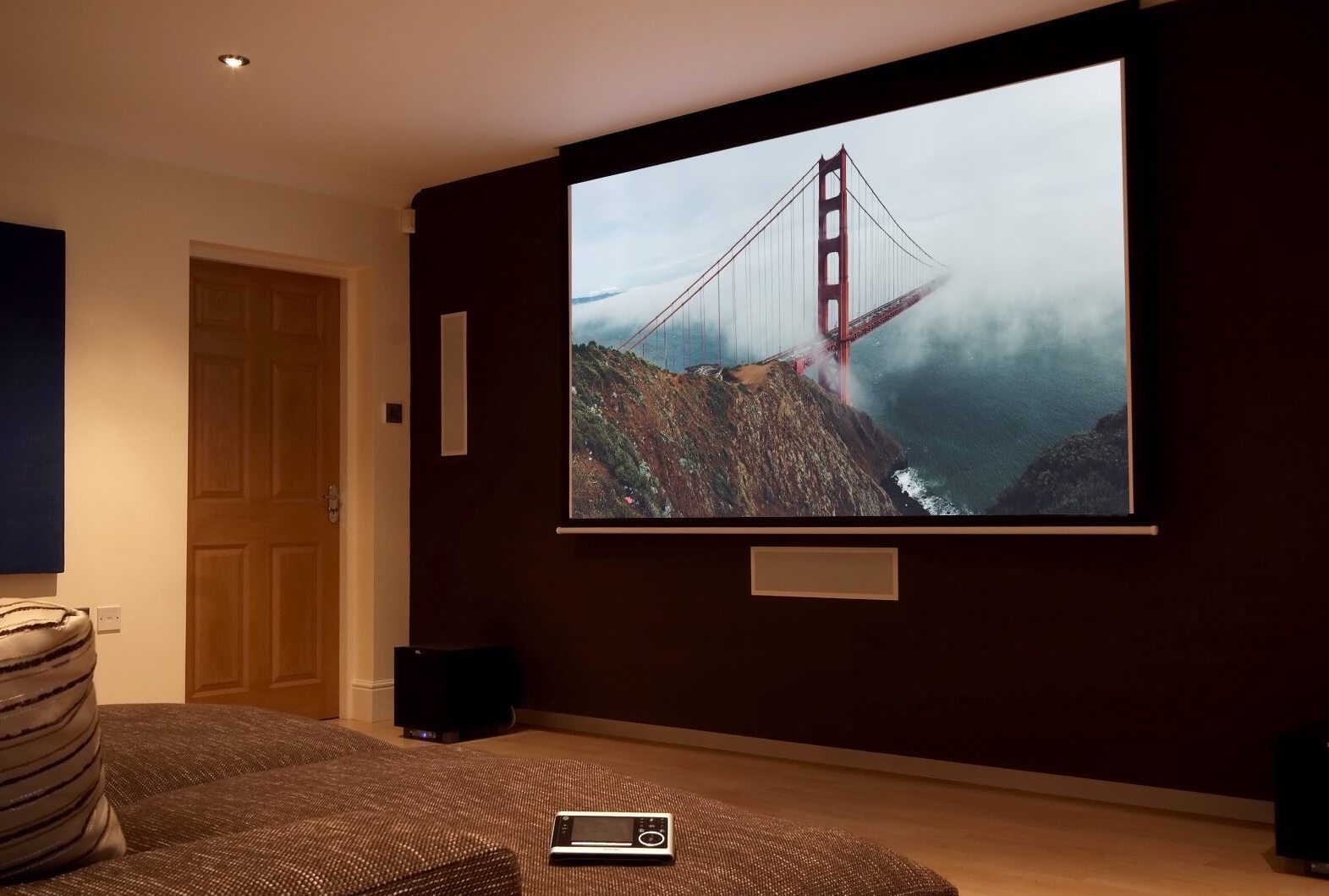Since the birth of cinema, projectors have been essential for presenting feature films to audiences across the world. Projectors are intrinsic to the traditional cinematic experience; the technology is iconic in representing the art form. Yet, when it comes to building a home theater setup or upgrading to a larger display, most shoppers would never consider a digital projector as an option in their homes.
There are plenty of reasons as to why flat-panel television sets dominate the consumer market for home entertainment. Flat-panel TVs are easy to set up and they come with integrated speakers that sound decent enough. With so much competition between manufacturers, the prices are affordable for most buyers. These days you can get a fifty-inch television set for a couple hundred bucks. But if you have any sort of sentimentality for the classic theater experience, then you might not be lured by deals on smart TVs and 4K Ultra HD panels. Instead, you might find yourself pricing digital projectors and reading about how you can make one work in your home. Perhaps you just want to recreate the magic you remember experiencing at the movies as a child.
To help push you in that direction, here are three reasons why you might enjoy a digital projector over a flat-panel TV. Make no mistake, there are many factors to consider before choosing a projector as your primary display. But with careful consideration and a little planning, just about any space can be transformed into a mini movie theater.
1. Going Big
The most luring appeal of a digital projector is the incredible screen sizes they are capable of displaying. Placed at ten feet from a screen or wall, many models can create an image that is about seven feet wide by four feet tall. Think about that—seven feet wide. That puts life-sized characters right inside of your living room.
Watching content in a larger format enhances the entertainment experience. Sports programming becomes more breathtaking as players seem tangible and real. Multiplayer gaming is elevated to a higher level since there is more real estate for split-screen viewing. If you use streaming services like Netflix or Amazon, navigating menus and reading descriptions is a bit easier with an oversized image.
It’s difficult to achieve this effect with the flat-panel TVs currently on the market. TVs close to the size accomplished by projectors can cost several thousand dollars. Not only that, but extra-large panels are extremely heavy and pose challenges for mounting and support. Their sheer size can be imposing in a room, a dynamic that most people would rather avoid.
The great advantage to utilizing a projector is that once you turn it off, there isn’t a giant television staring right back at you. Sure, if you install a screen for your projector, you’ll have it hanging on the wall permanently. But there are other options if room aesthetic is an important factor, such as screens that can retract when not in use and wall paint that can be used in place of a screen, the choices depend on the application. Whichever method you choose, you’ll be amazed by how much more exciting movies and television shows become in a larger format. Once you see the season premiere of “Game of Thrones” or “Stranger Things” on a seven-foot screen, you’ll want to go back and re-watch every episode one more time.
2. Let There Be Light
Digital projectors make a great alternative to TVs because they actually cut down on the time you spend staring at an electronic display. A common complaint about viewing a computer screen or watching television for extended periods of time is that the panels cause eye discomfort and pain. Some have attributed this strain to the fact that electronic displays put out a lot of light from a rather small surface area.
A nice feature about a projector is that it doesn’t shine that light directly at you—the image is reflected off of a larger surface. When viewed from the right distance with appropriate brightness settings, watching a projected image can feel more comfortable to your eyes.
In addition to the alternate quality of light, movie-goers often notice that motion and detail feel differently in a movie theater when compared to watching the same content on a television set at home. The fact is that modern theaters have used digital projectors equipped with DLP technology for years. This technology is similar to what can be found in many consumer home theater projectors. Digital Light Processing was developed by Texas Instruments and utilizes a spinning color wheel along with microscopic mirrors to create the image that is projected onto a screen. Although there are other types of projectors such as LED and LCD, DLP projectors are favored by home theater enthusiasts because they tend to handle motion and brightness well.
3. Theater in a Box
Another benefit to owning a projector instead of a TV is that it can be much easier to take the theater with you wherever you might go. If you move often because of school or work, it’s simpler to throw a projector in a bag compared to shipping or packing up a TV. It’s also fun to kick it up a notch for parties and events.
Let’s say your friend wants to add another screen at their house for NFL game day. With a digital projector, you could turn a whole wall into a giant Red Zone display. Or think about those times of the year when the weather outside is beautiful. You can take the show outdoors to have movie night in the back yard or to watch the baseball game while relaxing in the pool. The smaller form factor of a projector combined with its ability to create a variety of screen sizes allows for plenty of applications.
If you are seriously considering a projector for your home but don’t know where to start, there are a few excellent resources to help narrow the search. Projector Central offers plenty of information about pricing and features for just about every model on the market. CNET also provides many reviews, as well as this list of a few affordably priced models. With Black Friday shopping coming soon, you might just be able to find a great deal on a projector that fits your needs.

















